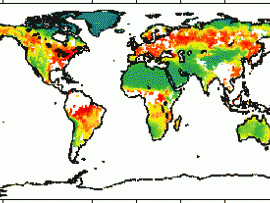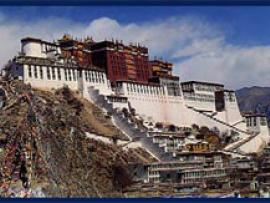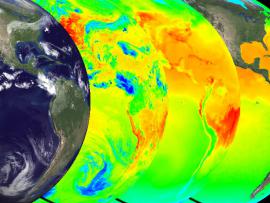Search
Primary tabs
Search
Your search for "Temperature" gave back 37 results.
Primary Topic:
Subtopics:
Type:
Standards:
Keywords:
Summary:
For a selected location, the student will investigate possible relationships between the vegetation index, the precipitation, and the surface temperature data over several years' time. Using that information, the student will predict the climate type...
Primary Topic:
Subtopics:
Type:
Standards:
Keywords:
Summary:
The animations in this group show the long-term average sea surface temperature, the long term average sea surface salinity, and the the long term average sea surface density.
Primary Topic:
Subtopics:
Type:
Keywords:
Summary:
The process by which water moves around the earth, from the ocean, to the atmosphere, to the land and back to the ocean is called the water cycle. These animations each portray a component of the water cycle.
Primary Topic:
Subtopics:
Type:
Keywords:
Summary:
The process by which water moves around the earth, from the ocean, to the atmosphere, to the land and back to the ocean is called the water cycle. These animations each portray a component of the water cycle.
Primary Topic:
Subtopics:
Type:
Standards:
Keywords:
Summary:
In this lesson, weather data from ground-based and satellite observations are analyzed for a real world application -- to plan a high mountain retreat in Tibet.
Primary Topic:
Subtopics:
Type:
Keywords:
Summary:
Explore the solar heating of the ocean in part one of a series on the water cycle. The animations show multiple views of the solar heating of the oceans, a picture of this first stage of water's cyclical journey from sea to air to land, and back again.
Primary Topic:
Type:
Keywords:
Summary:
Students will analyze surface temperature and solar radiation data to construct explanations about the relationship of seasons and temperature to the amount of solar energy received on Earth’s surface.
Primary Topic:
Subtopics:
Type:
Keywords:
Summary:
Ocean circulation plays a key role in distributing solar energy and maintaining climate, by moving heat from Earth's equator to the poles. Aquarius salinity data, combined with data from other sensors, will give us a clearer picture of how the ocean works
Primary Topic:
Subtopics:
Type:
Standards:
Keywords:
Summary:
The oceans are mostly composed of warm salty water near the surface over cold, less salty water in the ocean depths. These two regions don't mix except in certain special areas, which creates a large slow current called the thermohaline circulation.
Primary Topic:
Subtopics:
Type:
Standards:
Keywords:
Summary:
Whether referred to as "global warming" or "climate change," the consequences of the widescale changes currently being observed in Earth's climate system could be considerable.











